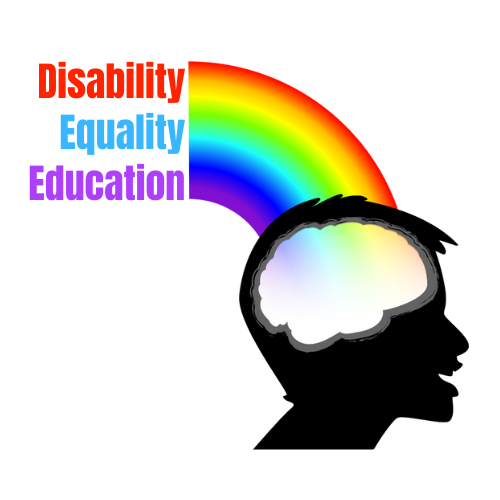Education Overview
Start creating classroom conversations around disability.
All students deserve an education that is inclusive of disability.
Education should be inclusive and accessible, but it also must actually INCLUDE accurate and positive/neutral representation of disability as well as teach about how disability has been viewed throughout time and the changes and movements over different periods of time.
For a guide on how to implement a Disability Inclusive Curriculum, see our Getting Started page.
Our lessons bring disability into the conversation in many ways. Using the social model of disability, some lessons speak directly about disability, the history of the fight for disability rights, or about accessibility, while others simply include concepts central to the social model of disability or feature characters who happen to be disabled.
If you are looking for lessons related to specific grade levels, use the links below or the navigation from our menu under Education. Individual grades and subjects are available using the links below in the “Lessons and Resources by Grade” and “Lessons and Resources by Subject” sections. You may also view all lessons and resources in alphabetical order here.
For more information about our lesson plans and resources and background on the kind of content you find here, scroll down.
Lessons and Resources by Grade
Lessons and Resources by Subject
View All Lesson Plans and Resources here:
https://www.disabilityequalityeducation.org/all-lessons-and-resources
The material you find here centers a Social Model of Disability lens, not a medical model lens where disability is seen as a problem that needs to be fixed. When students learn about modern and historical figures, those people’s disability should be included, not erased, from the lesson. The disability rights movement and its leaders must be included in age-appropriate ways, just as all other civil rights movements are. The books and resources that students interact with should have positive disability representation so that students — disabled and non-disabled alike — will see disability represented more often. As a natural part of human diversity, disability should be included and is often missing from Diversity, Equity, and Inclusion (DEI) conversations. When disability is not seen as a neutral/natural part of the human experience, stigma and negativity are allowed to fester. Our lessons, resources and supports help you become more comfortable talking about disability and including it in the conversation as a regular concept throughout the year. In our Members Area you will have an opportunity to talk with us and others about any questions or concerns you have about any of the lessons or resources.
All of the lesson plans created by us have been designed and approved by disabled people, however, we are always open to constructive feedback. We also have had all resources from outside sources approved for use on our website by a team of people with many different disabilities.
To the right you will find links to take you to the comprehensive disability-inclusive curriculum lesson plan and resource library that we have created and curated. This is a resource for teachers to explore disability in multiple contexts (history, English, art, science, social studies, and more) in the classroom.
Most of the lessons and resources included are those we’ve written and created ourselves, however, we are also including some written by other organizations that fit our criteria for Disability Inclusive Curriculum. Those lessons are clearly marked and will include links and summaries. They can be found on their own on the “External Lesson Plans and Resources” page.
In addition to the lesson plans and resources above…
We have other programs and resources to help you grow the conversations about disability in your classroom and throughout the school.
In order to support you as you use the resources found here as well as others you may come across, or those you create yourself, we offer a variety of ways to get that support and training including our Membership Area and Professional Development in both live, customized as well as on-demand offerings
Be sure to check out our collection of other educational resources that we encourage you to explore and use in your classes as well.

